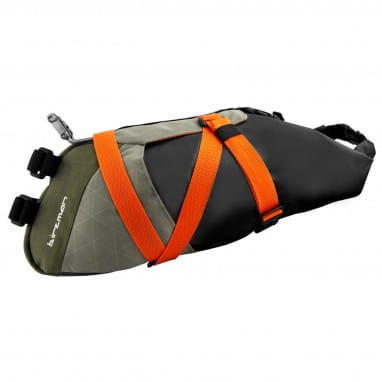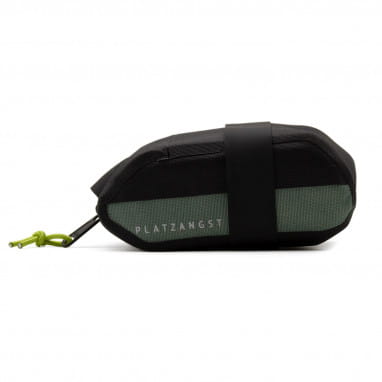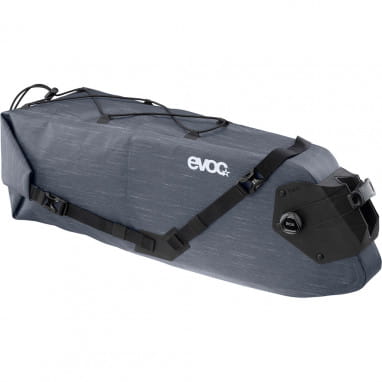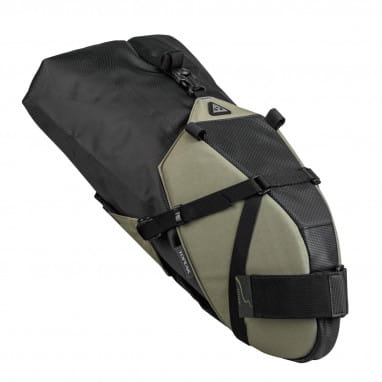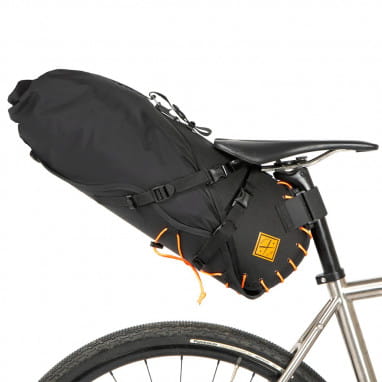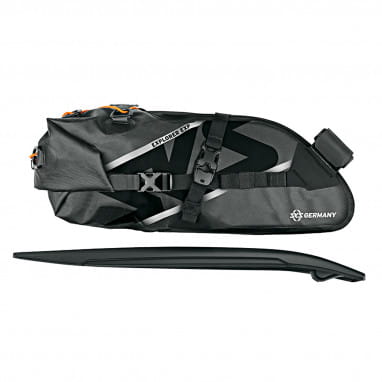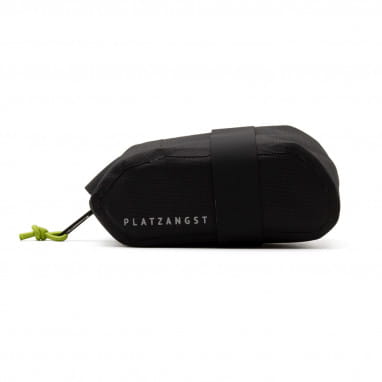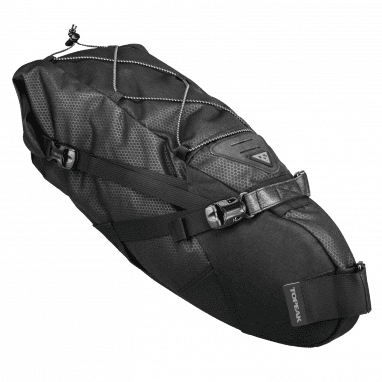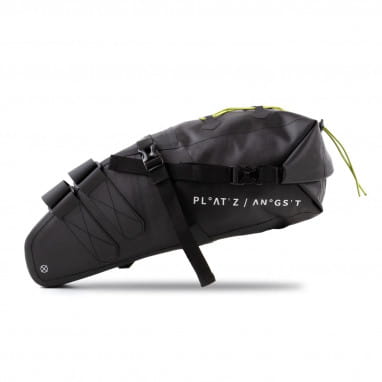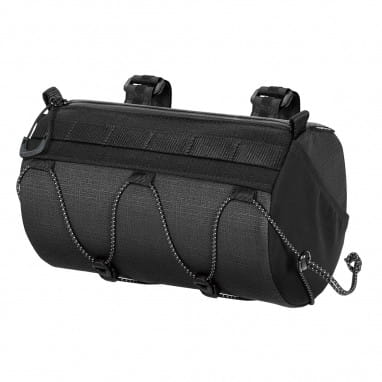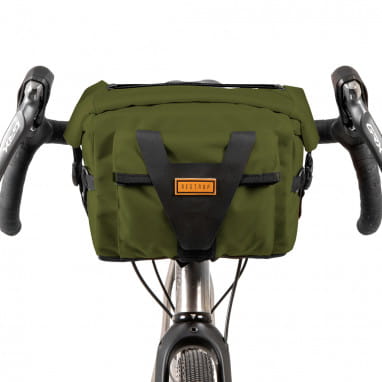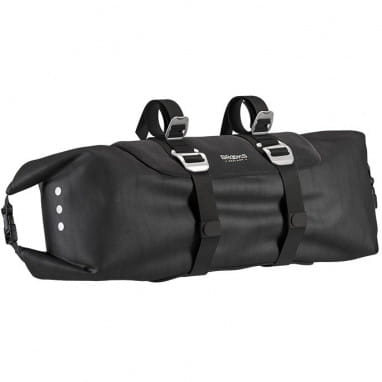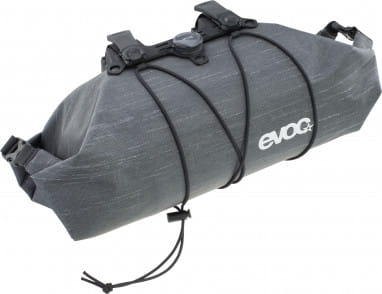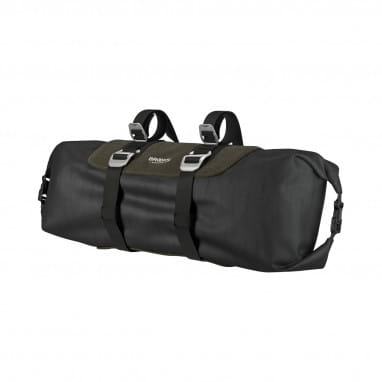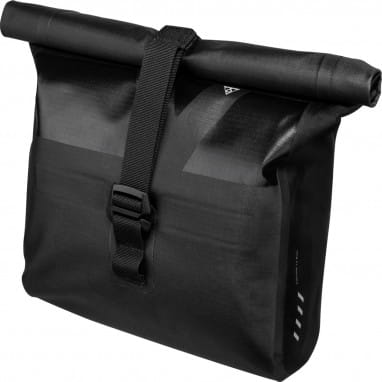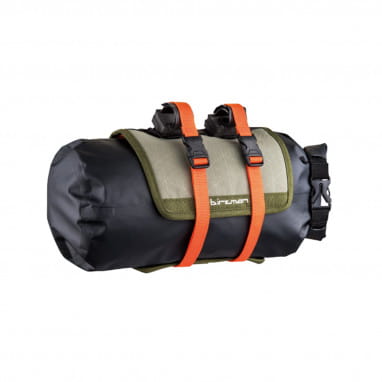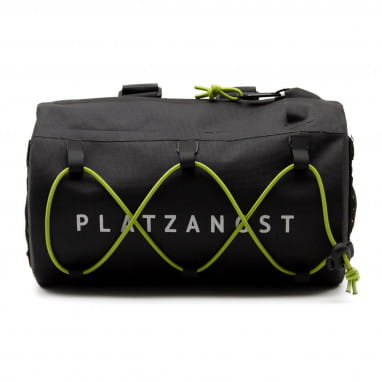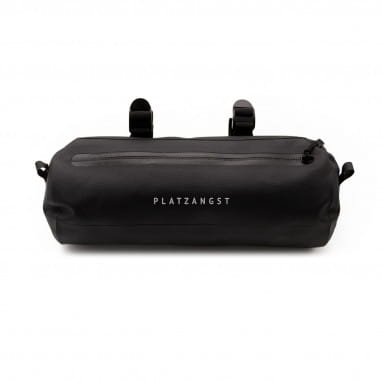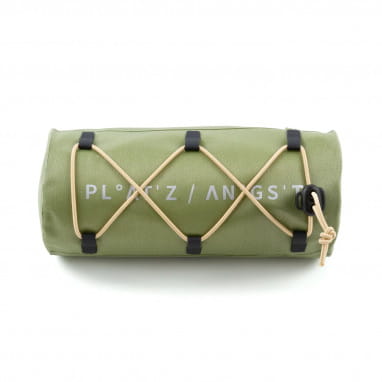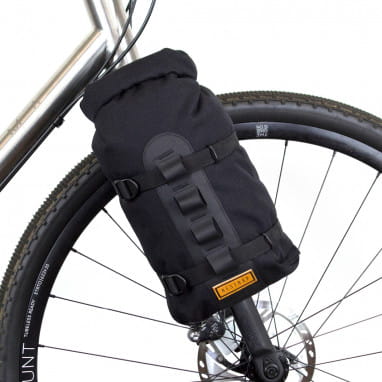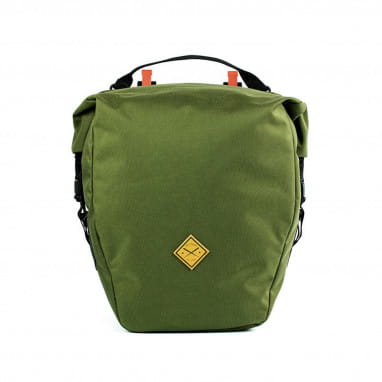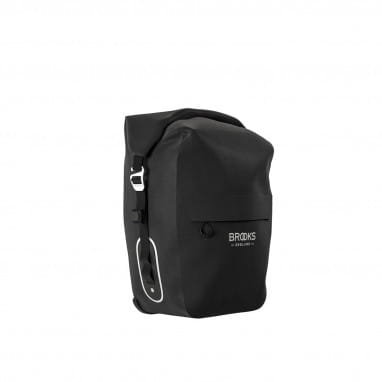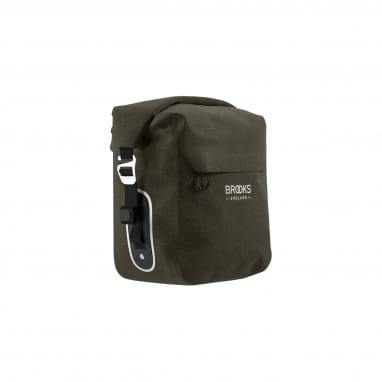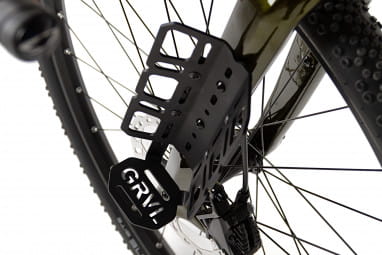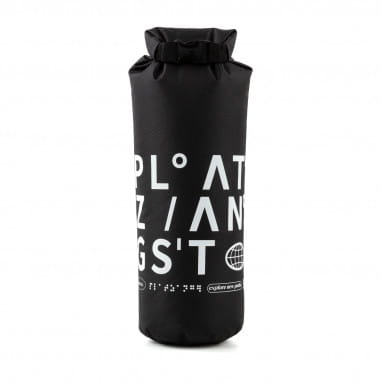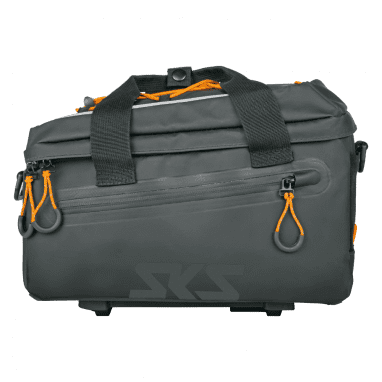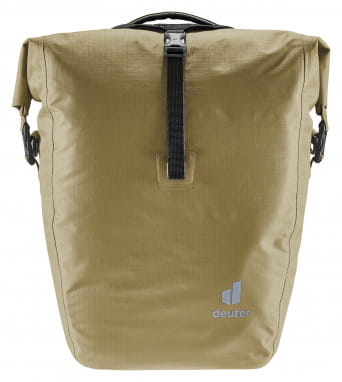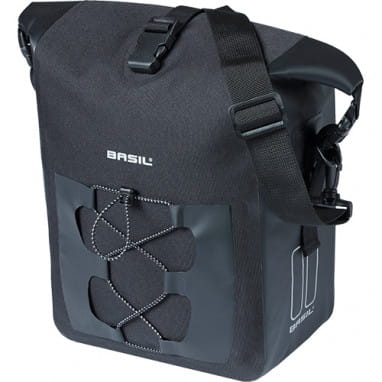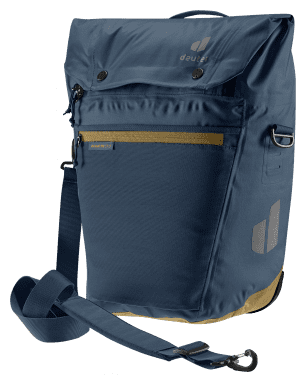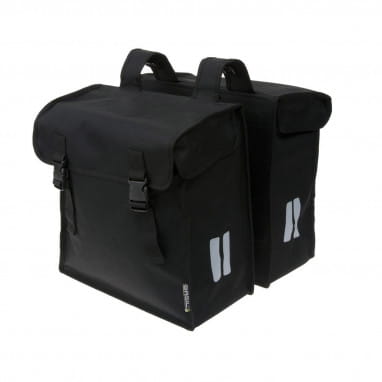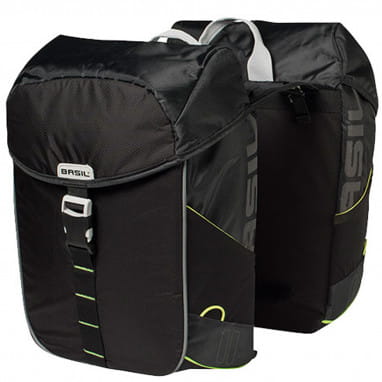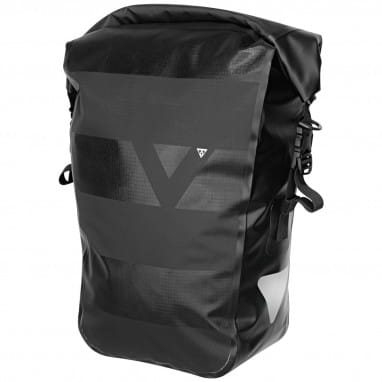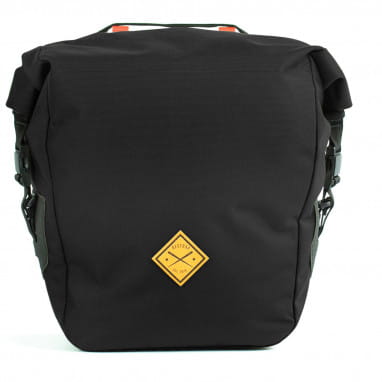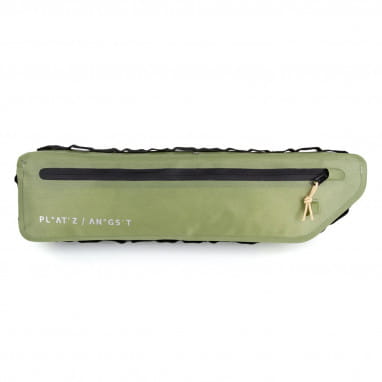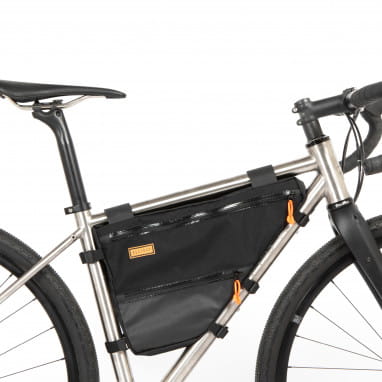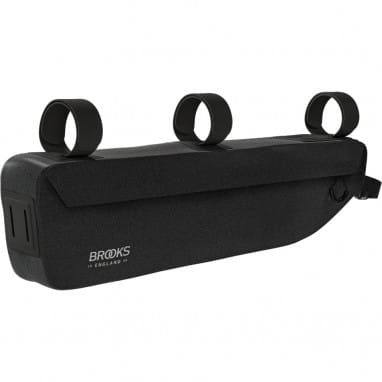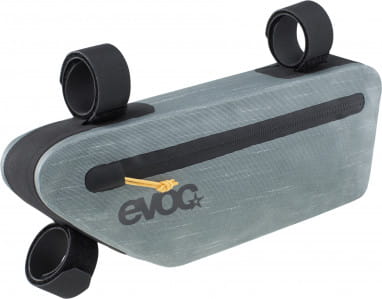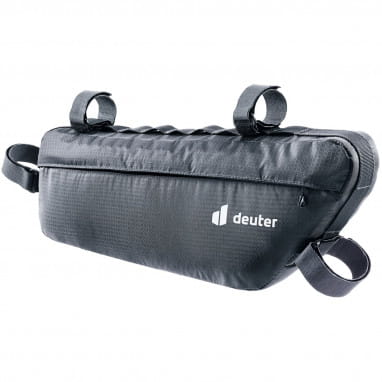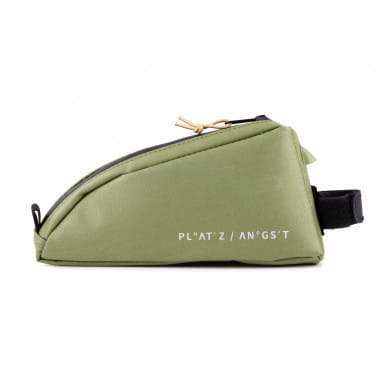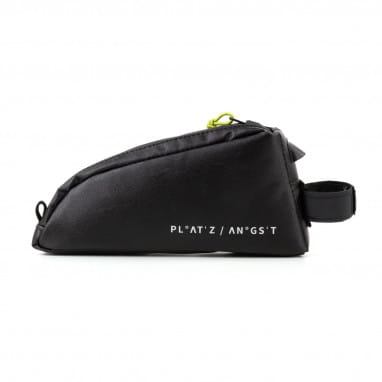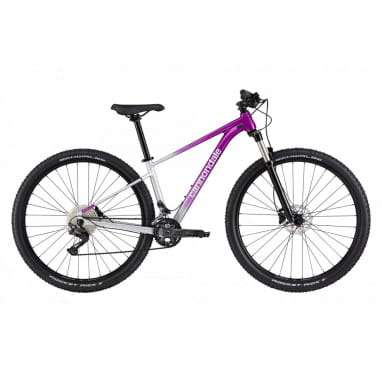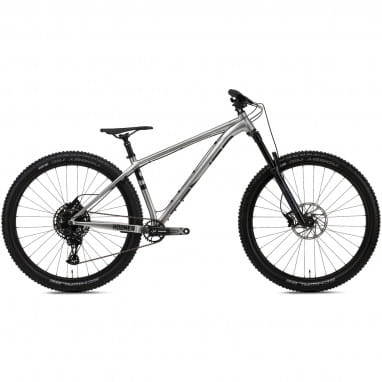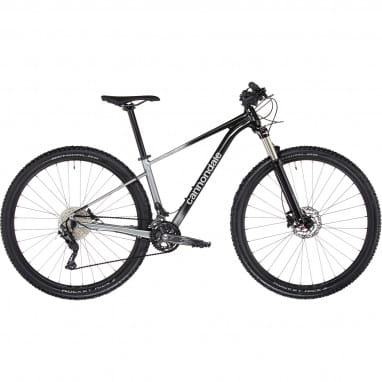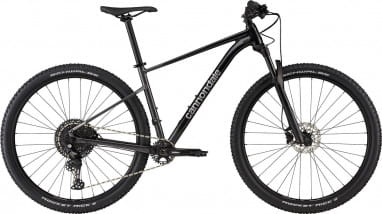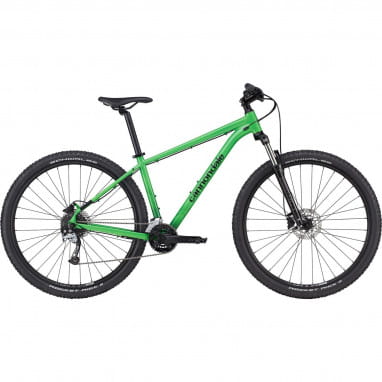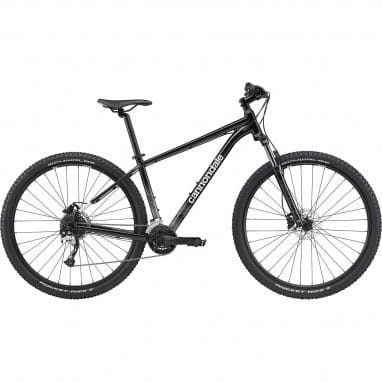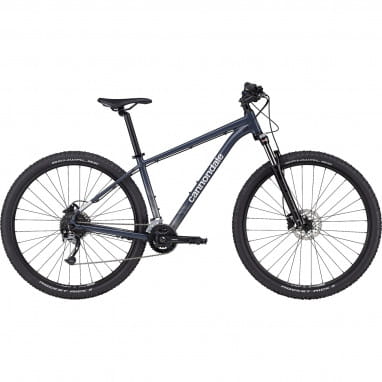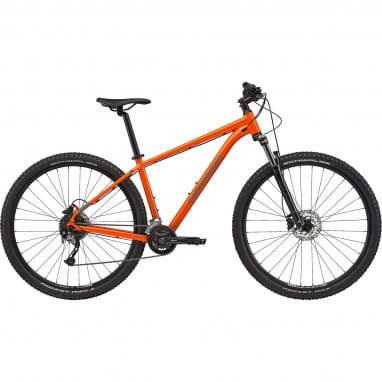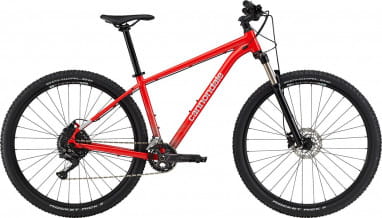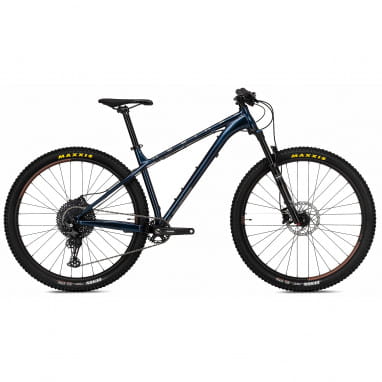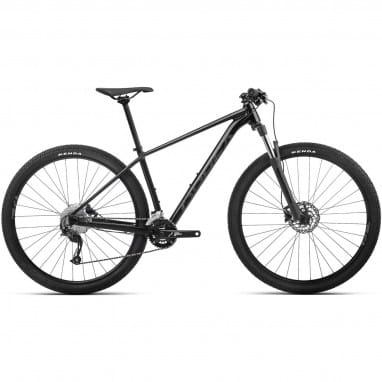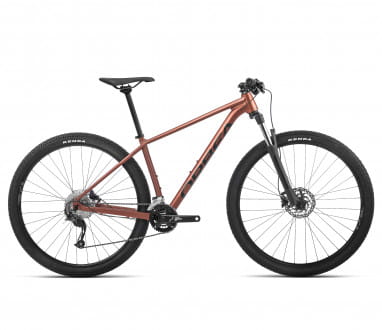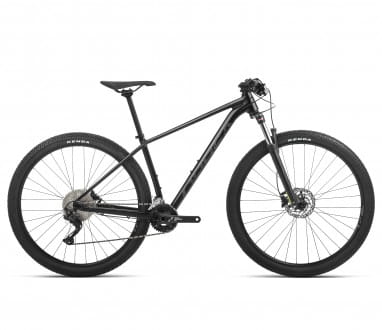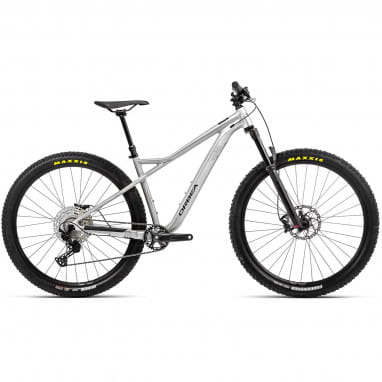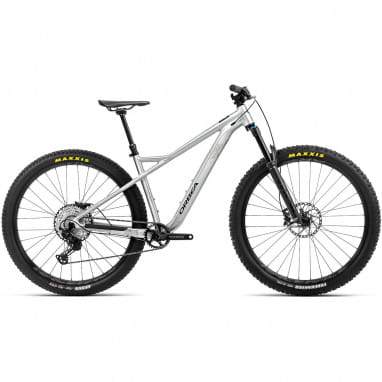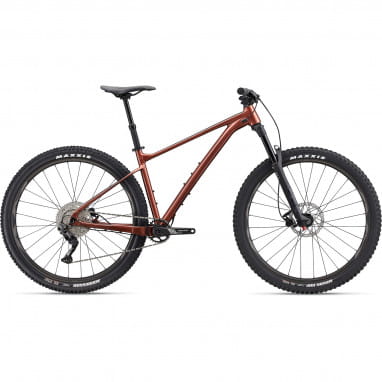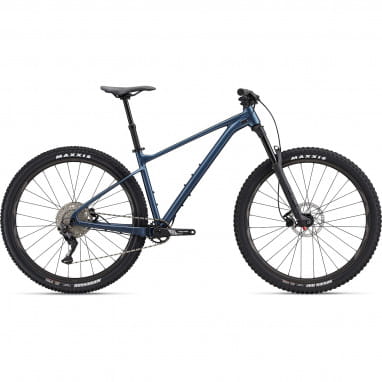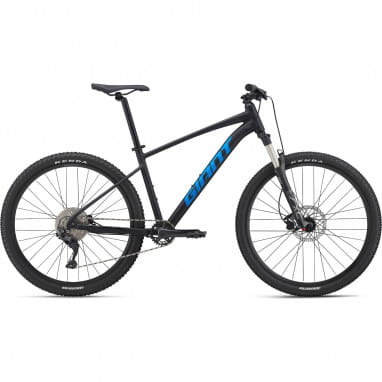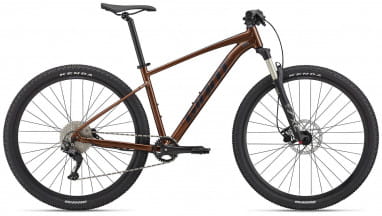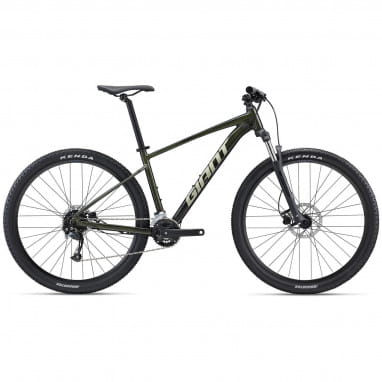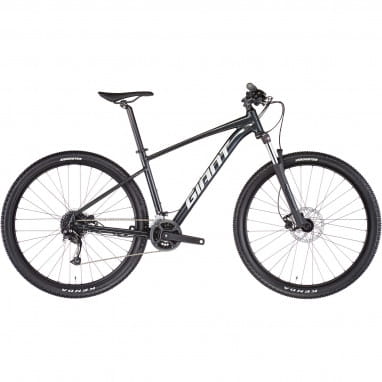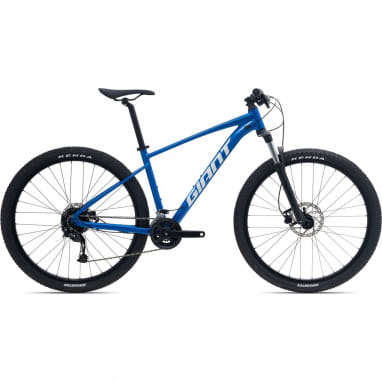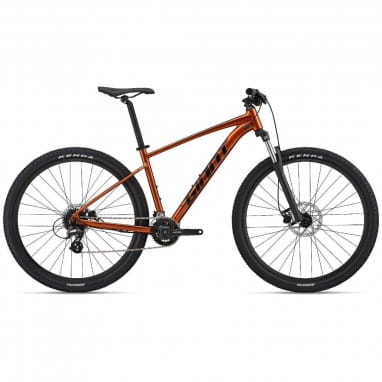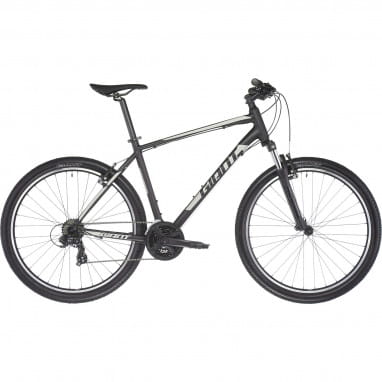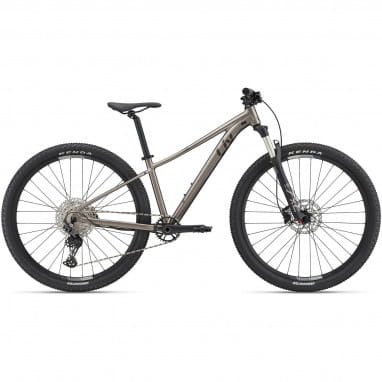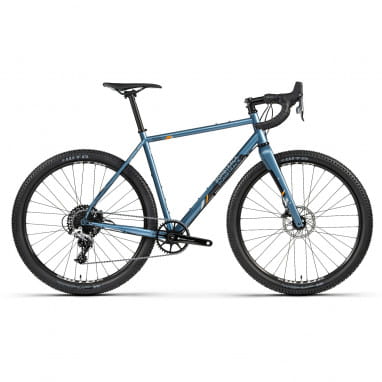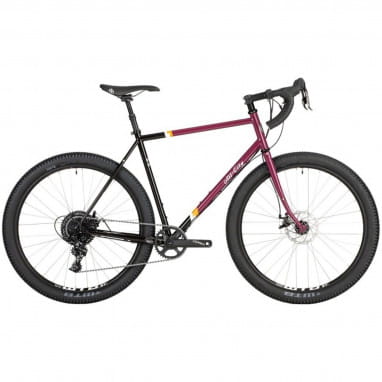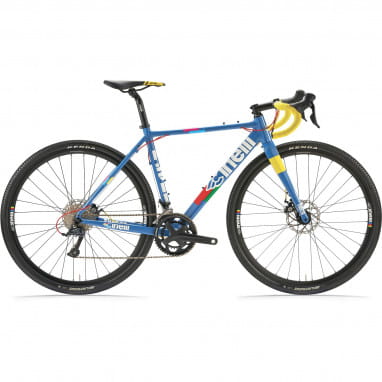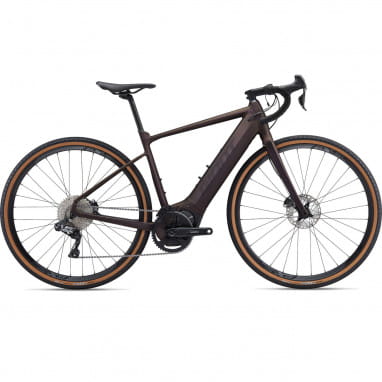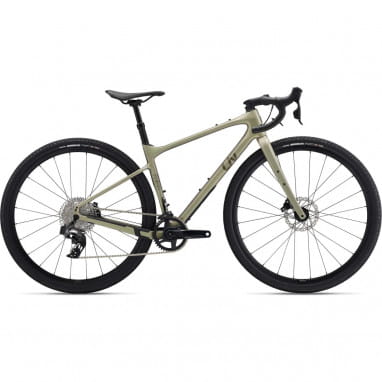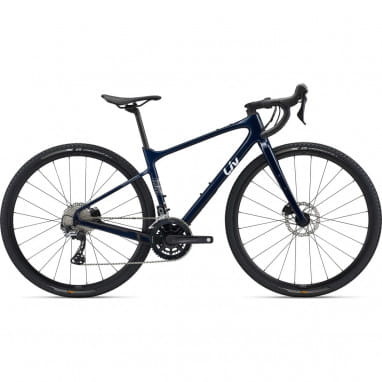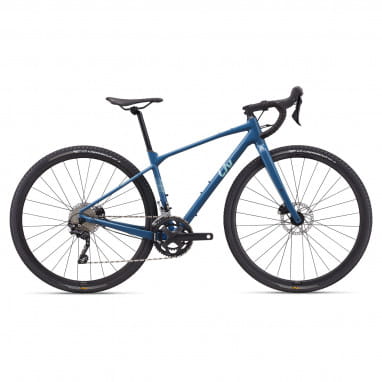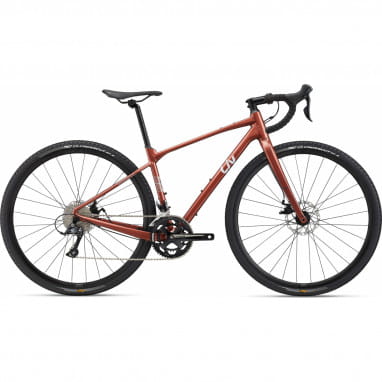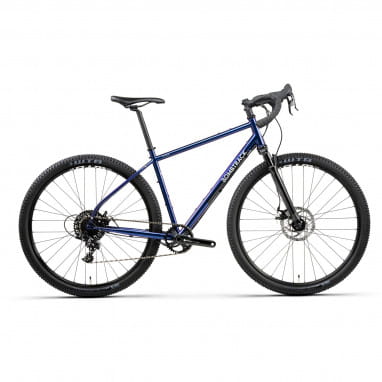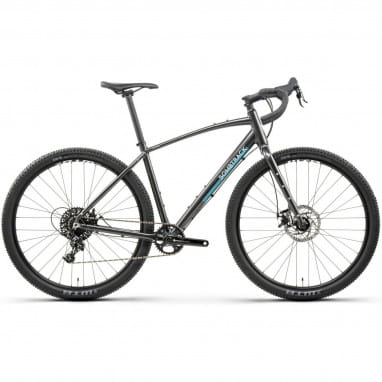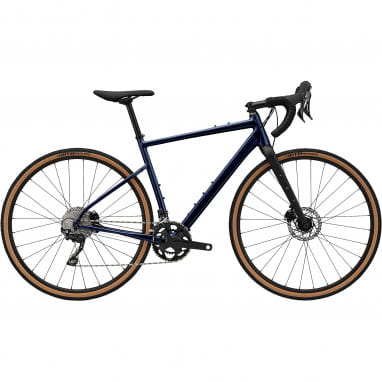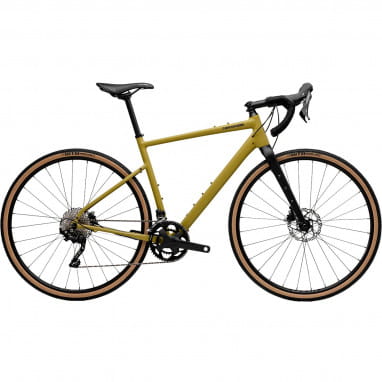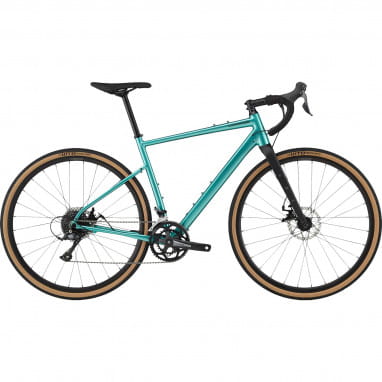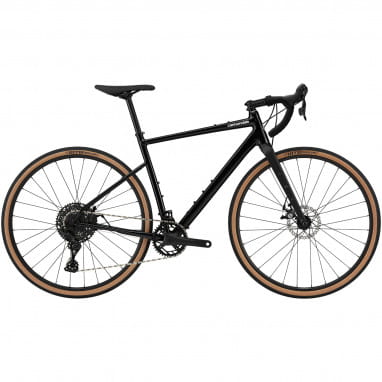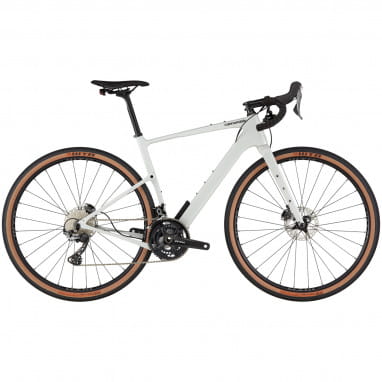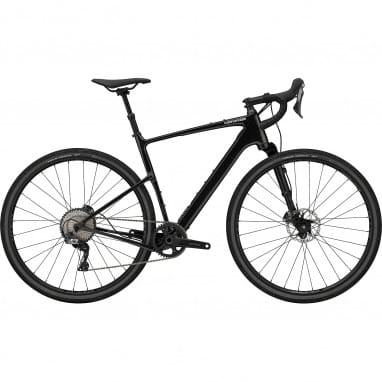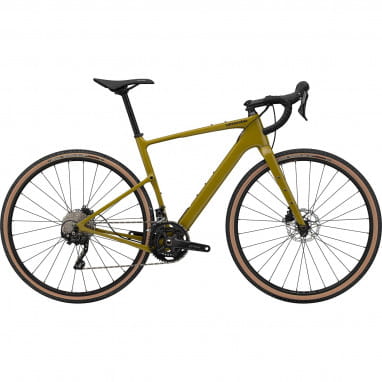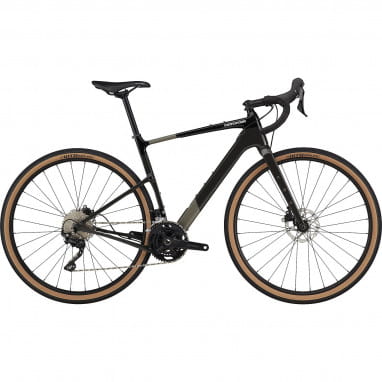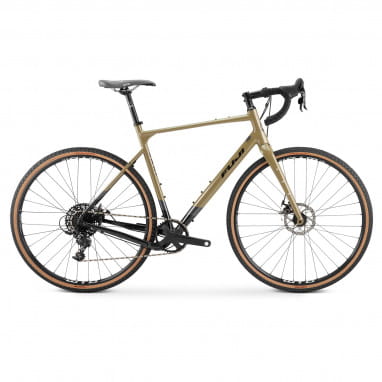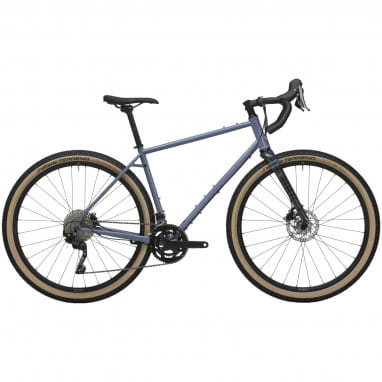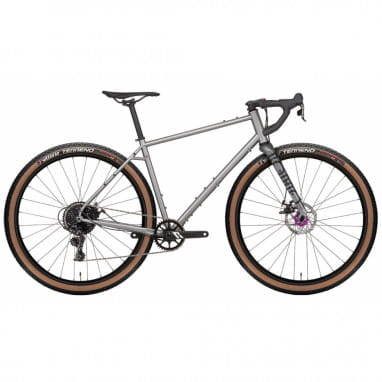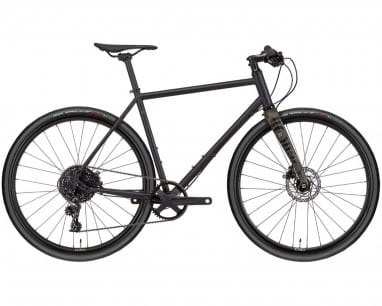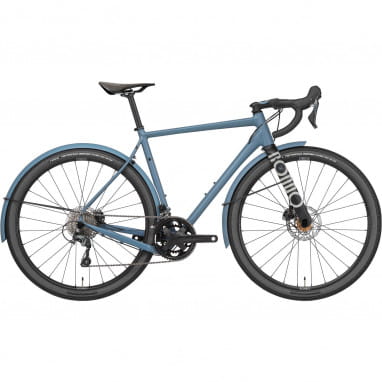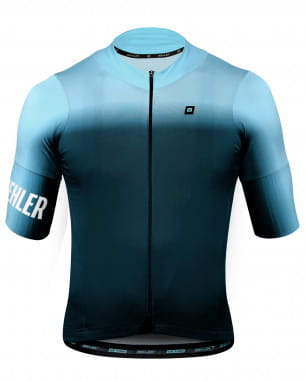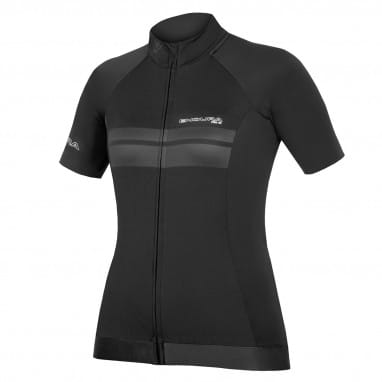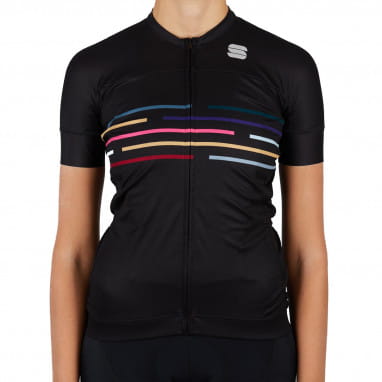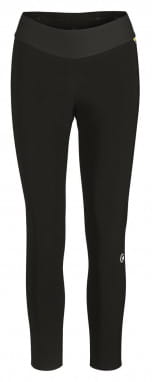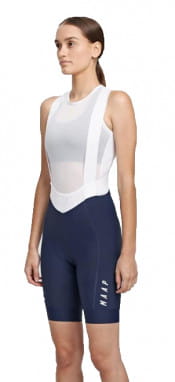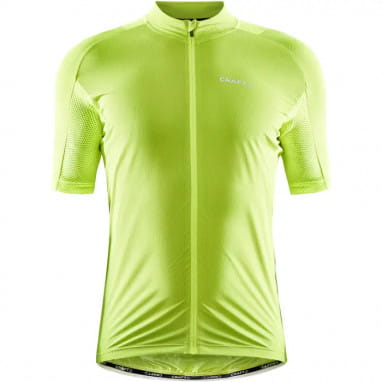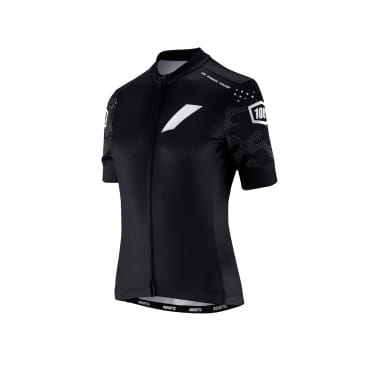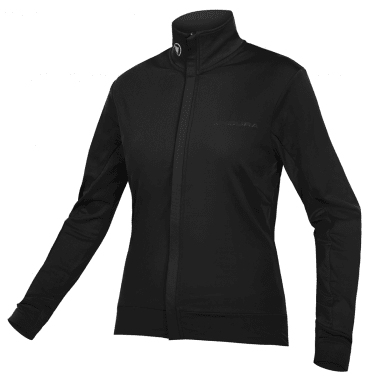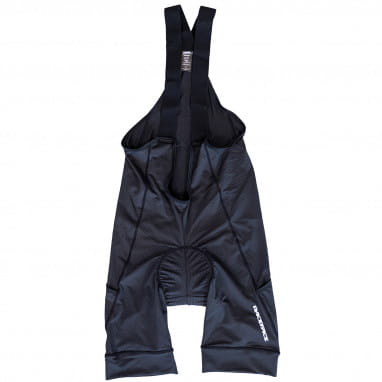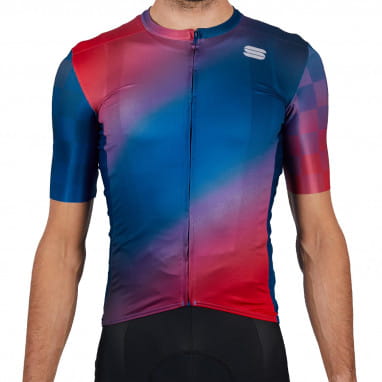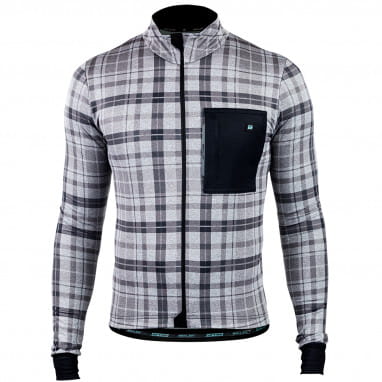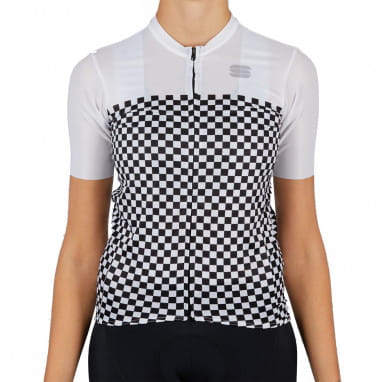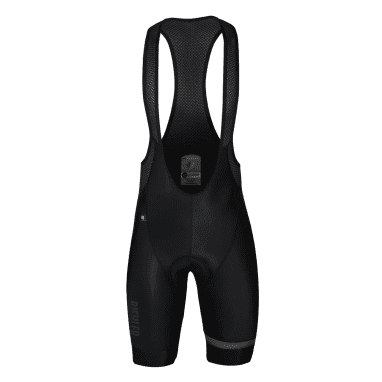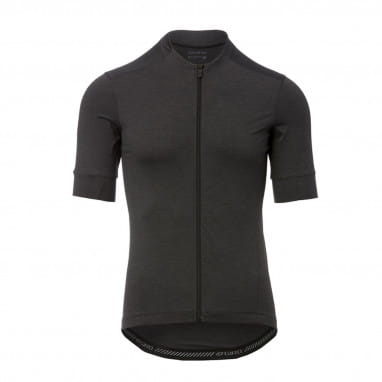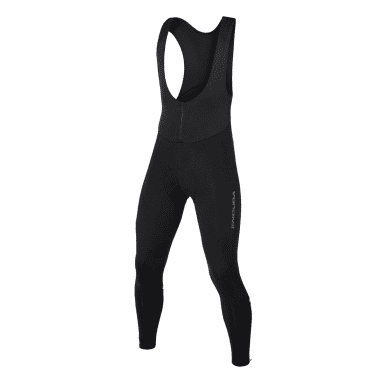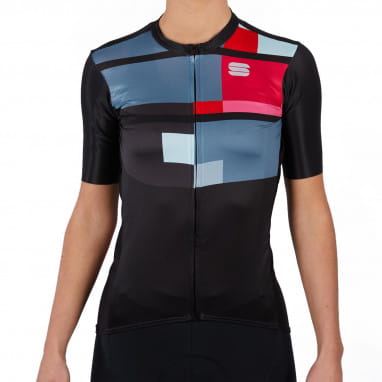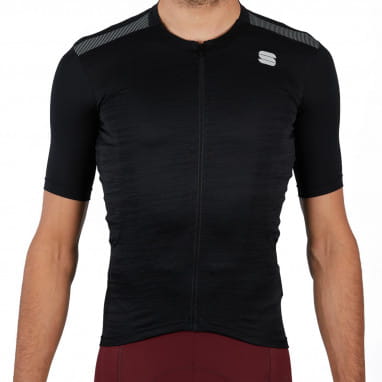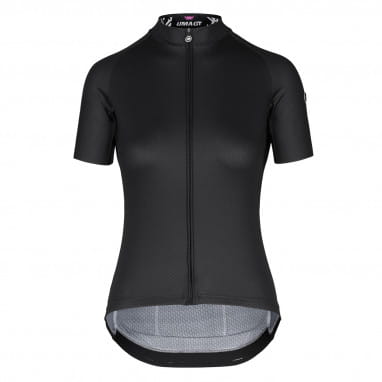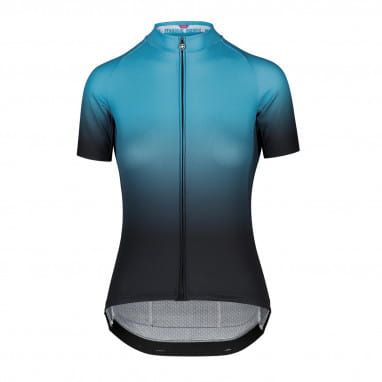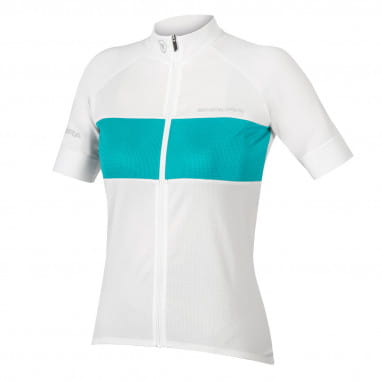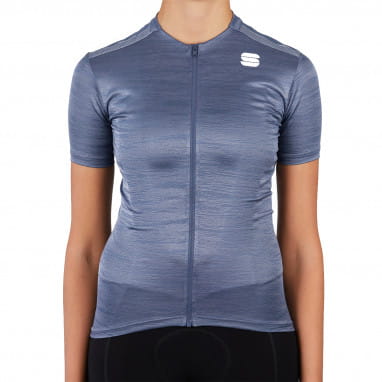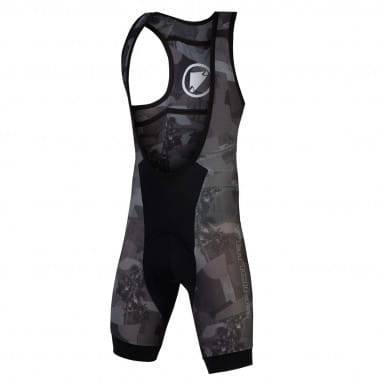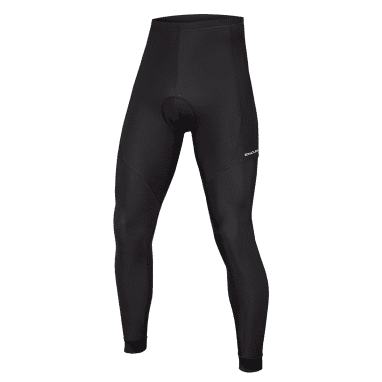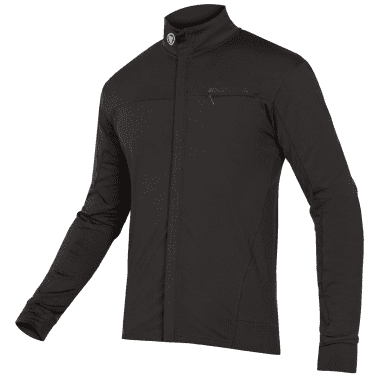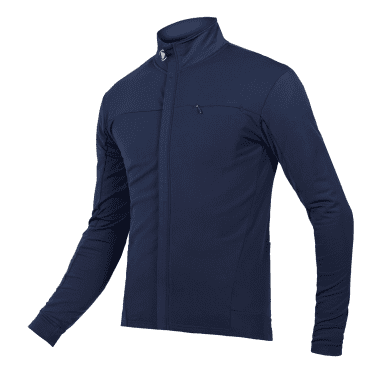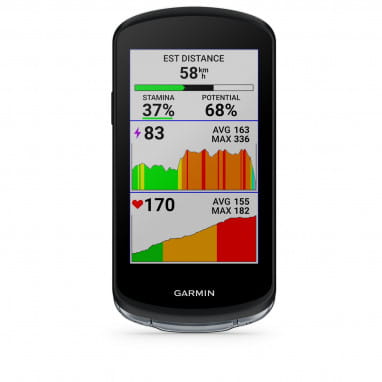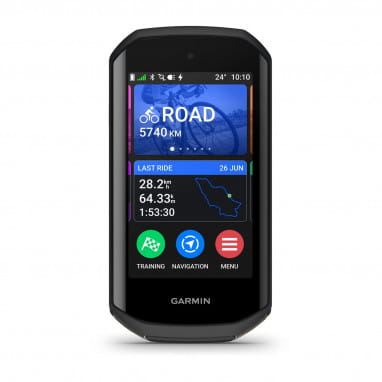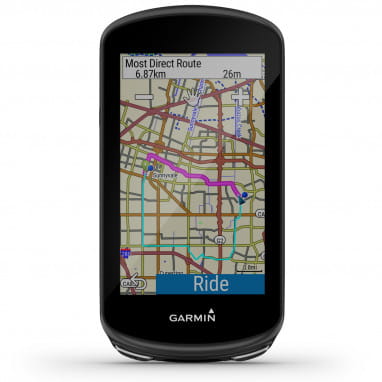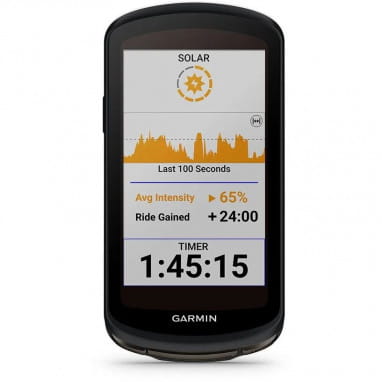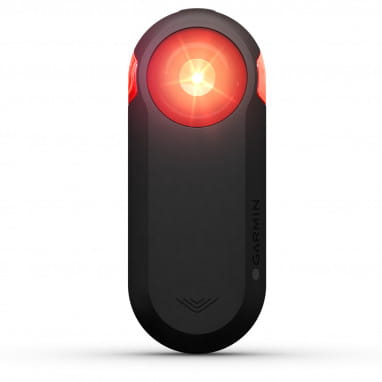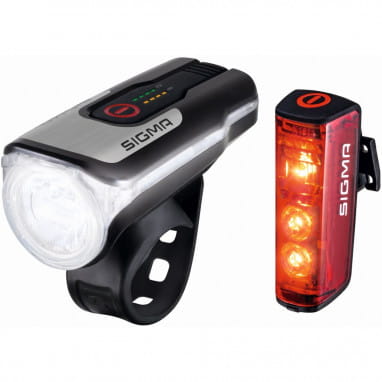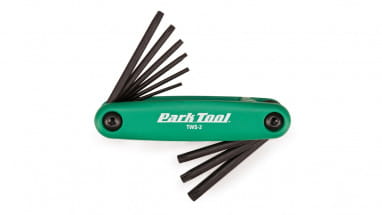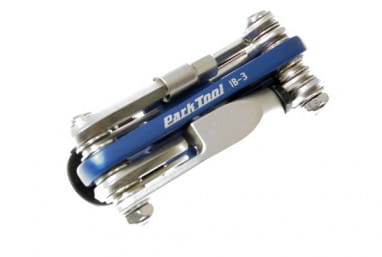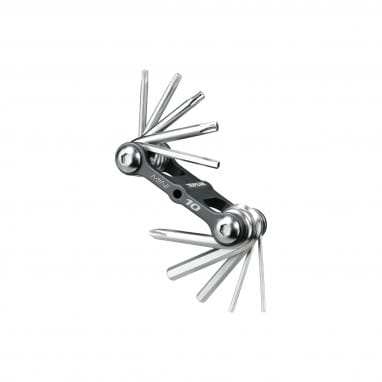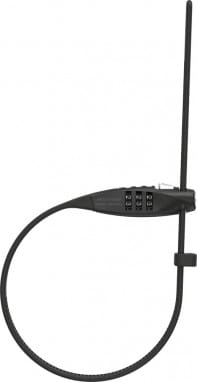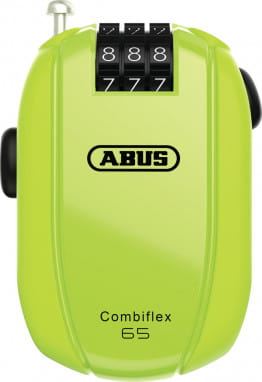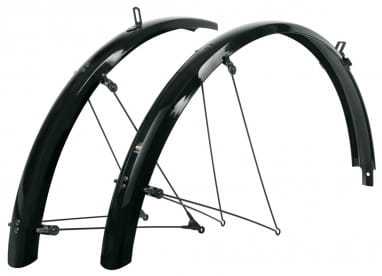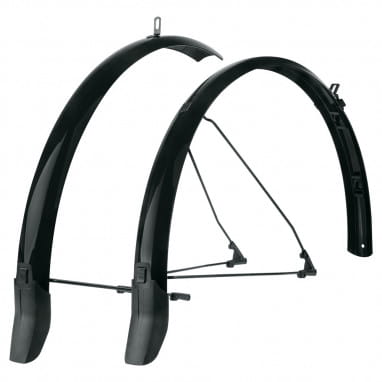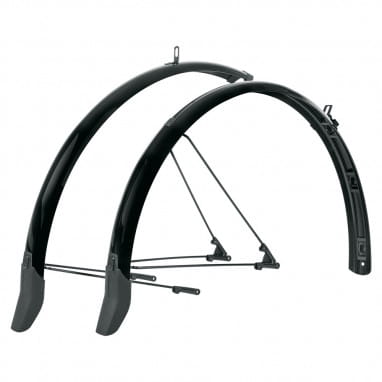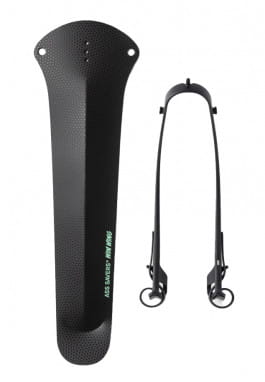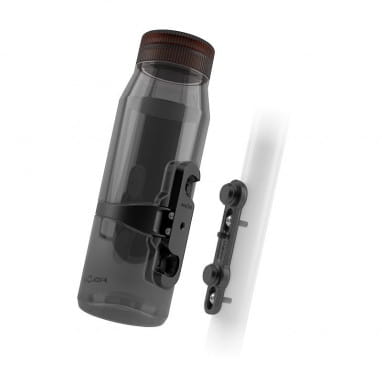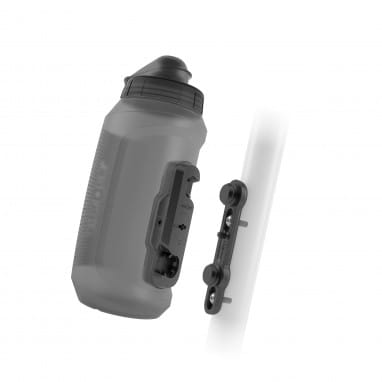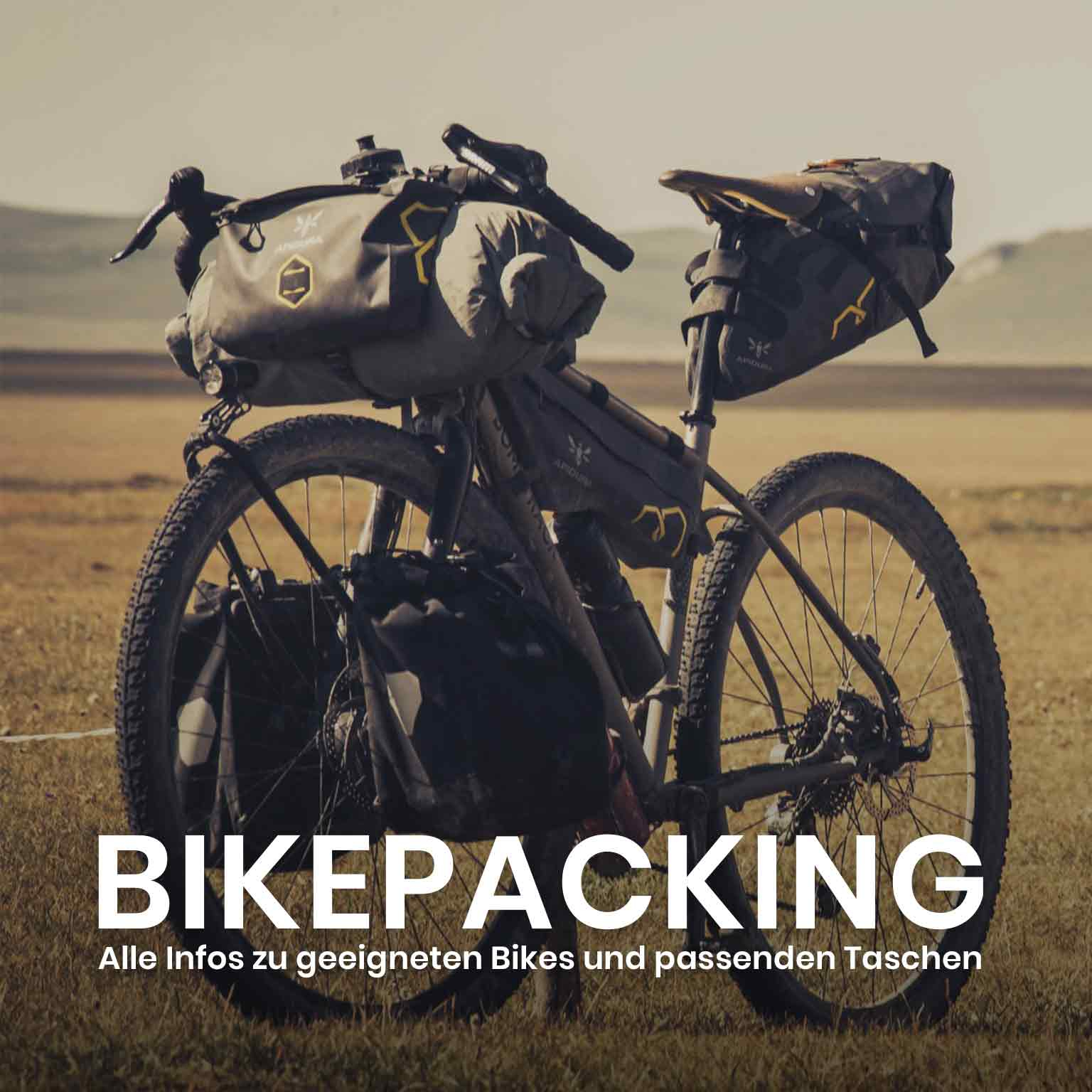

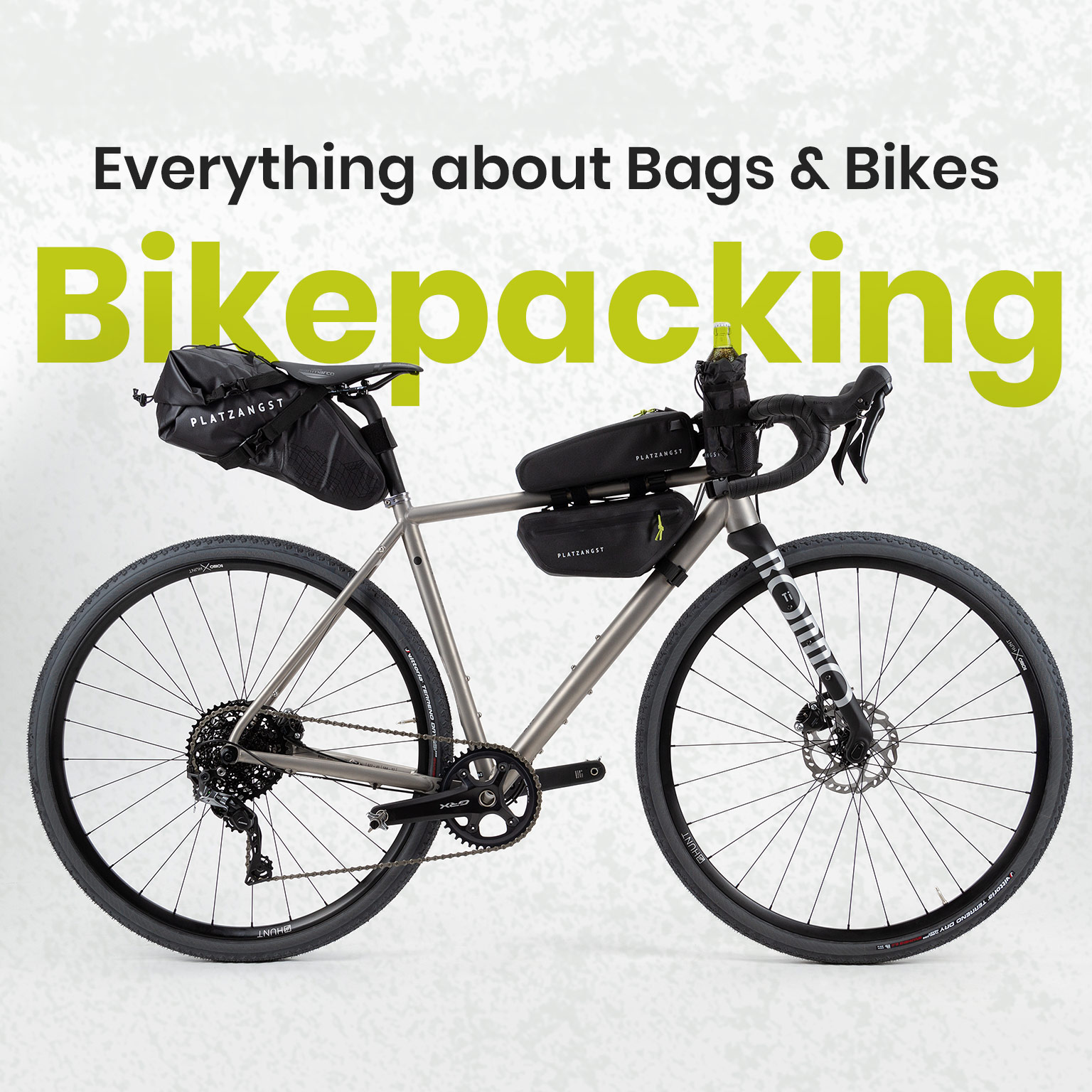
What is Bikepacking
The basic components of bikepacking are your bike, camping equipment including bikepacking bags and a lot of adventurous spirit. Bikepacking is about combining several stages into one big tour with your bike and spending the nights in the tent you brought with you. The appeal is in getting to know nature and places you might not otherwise discover. There is a goal and a rough route - the sleeping place for the night is usually spontaneously pitched in a particularly beautiful place.
Bikepacking is not about reaching the destination as quickly as possible, because the journey itself is the adventure. It is not uncommon for genuine bikepackers to look for destinations far away. So it can happen that ambitious riders plan bikepacking trips over several weeks and even months. All these tours could not be more different, but still have one thing in common - the absolute adventure character. To make sure your next bikepacking adventure is a complete success, we have summarized the basics of bikepacking for you here.
Which bike is suitable for bikepacking?
In principle, you can realize a bikepacking trip with any bike, as long as you can mount bags on it. A large number of bikepackers make their tours with gravel or mountain bikes.
What types of Bikepacking Bags are there?
Also in the selection of bags it depends strongly on your taste, the purpose and your bike. There are classic panniers for the luggage rack, saddle bags, frame bags and much more.
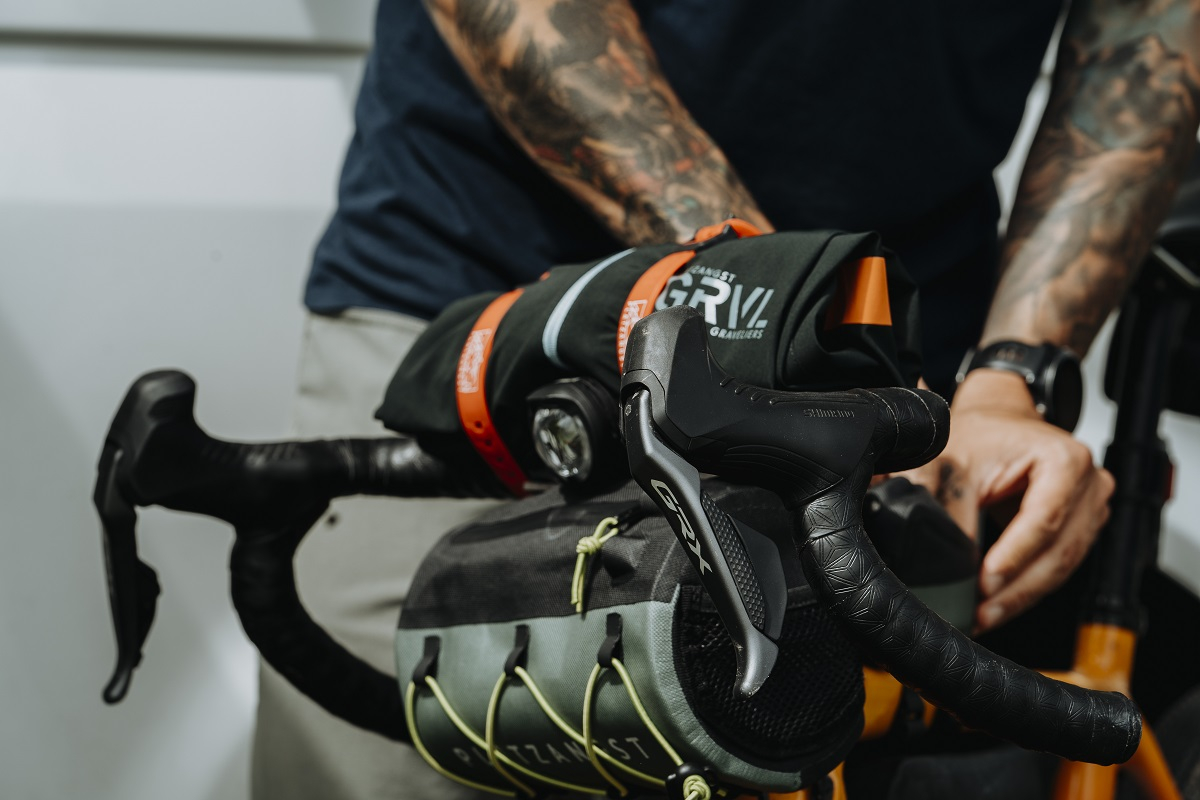
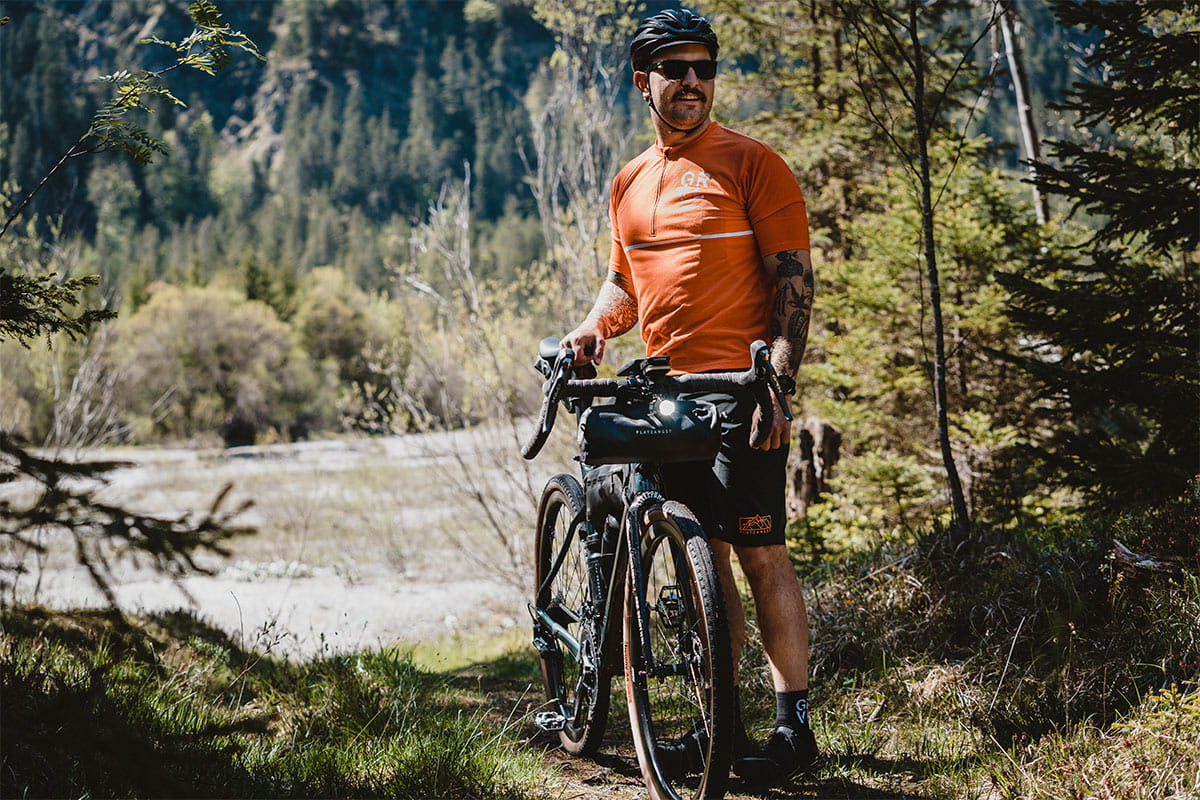
Hardtail Mountainbikes
If you want to discover bikepacking for yourself, for example, in alpine terrain on challenging trails, you can't avoid building a mountain bike for bikepacking. Here are actually no limits in the selection of the bike, because the possibilities to mount bikepacking bags are relatively small anyway.
Due to the suspension elements, the possibilities of mounting bags are somewhat limited. The hardtail, where there is only the suspension fork and no suspension on the rear wheel, is better suited for bikepacking than the Fully. In the hardtail MTB you have the possibility to attach bags to the main frame due to the lack of rear suspension. The mounting of a saddle bag is also possible here, because it is rigid. In a full-suspension mountain bike, the saddlebag would move too much and strongly affect the driving behavior.
Popular when bikepacking with mountain bikes is the handlebar bag, as this hardly affects the driving behavior. Many bikepackers who are on the road with the mountain bike, due to the low possibility to mount bags also rely on an ergonomic backpack to increase the storage volume.
Gravel Bikes
Gravel bikes have proven to be the most useful in recent years when it comes to going on bikepacking tour. Their basic design is very similar to that of a road bike, but it still has some significant differences or special features.
The special features of a gravel or bikepacking bike at a glance:
- The frame of the gravel bike has more tire clearance, so wider tires with more tread are mounted for off-road use.
- Most bikes rely on gearing with only one chainring on the crank. This simplifies shifting and makes for less cable clutter. The transmission is designed with a large cassette on the rear wheel but still universal.
- On the frame of a bikepacking bike threaded eyelets are installed in various places, so that bags, mudguards and luggage racks can be screwed directly. Common places for the threaded eyelets are the dropouts of the rear and front wheel, the area at the saddle clamp, the fork bridge and the classic areas of the bottle cage inside the frame triangle. Some bikes also have additional holes on the top tube to mount a top tube bag there.
- The geometry is a mixture of sportiness and comfort, so that both ambitious tours in the terrain are possible, but also long-distance rides are no problem.
The Gravel bike is extremely versatile due to its design and offers you so many options for different adventures. From a relaxed tour around the lake to a multi-day adventure across the Alps, you can experience everything with such a bike. We wish you a lot of fun on your next adventure!

Saddle Bags
Saddlebags are the most versatile bike bags, here you will find a wide selection from the noble leather pouch with some tools to the pannier with a few liters of content. Saddlebags are an excellent alternative for those who do not want to have a rack on their bike and still need some storage space at the rear. In addition, large saddlebags are extremely helpful in lousy weather, because they also replace the rear fender and catch the worst splashes.
What fits inside? In the smallest saddlebags fit with a little luck half a liter of content, they are really only intended for multitool and spare tube. Large bikepacking seatpacks stow about 17 to 18 liters of contents, though they tend to get a bit crumpled in the process due to their construction. You can pack your change of clothes inside, but also the tarp or a light sleeping bag are well accommodated here.
Handlebar Bags
What would you like? A large, rectangular handlebar bag with clear pocket on top for map, cell phone or even tablet? A small stem bag that can hold a water bottle or your cell phone and keys? A smartbag that stores your cell phone in your field of vision and protects it from splashing water? You have a huge choice of handlebar bags. Handlebar bags are particularly popular with bike packers, because they have significantly more content than other handlebar bags. Thanks to the almost 20 liters of content, you can accommodate light things such as an ultra-light sleeping bag. If you want to buy a handlebar bag, you should first make sure that it does not get in the way of trains or your bike lights. Also, your bike handlebars will determine the possible size of these bikepacking bags. A drop bar may only fit a narrower handlebar roller than a flat bar. A handlebar roll should not be loaded too heavily. Many handlebar bags have a strap, so you can take your bag with you whenever you park your bike.
What fits inside? The range of handlebar bags is particularly wide. In large handlebar bags fit 15 to 19 liters. A smartbag will just fit a cell phone. Most handlebar bags have a 5 to 7 kg load capacity. A sleeping bag or lightweight sleeping pad will fit in a handlebar roll. A regular handlebar bag is best for carrying your valuables and snacks on the go. Smartbag and Stembag are for a few small items.
Fork Packs and small Panniers
Front wheel bags, fork bags, lowrider, frame bags for front ... these bags you will find under many different names. Since they offer a lot of additional storage space on the front wheel, they are very popular for bikepacking and on bike tours. They are usually smaller editions of the rear panniers; they are also available individually, in a set of two, or as a three-piece bag.
Here you should consider the mounting options that your bike offers. If your bike has mounting eyelets, you can first mount front racks and then mount bikepacking bags there. If your bike does not offer this option, you can buy fork bags that come with a bracket. This is then attached directly to the fork. Lowrider bags are often bought as a set. They should always be loaded equally heavy on the left and right, so that they do not affect the directional stability of the bike.
What fits inside? In front luggage carrier bags usually fit around 10 to 20 liters of luggage, they may be loaded with up to 10 kg. Our tip: Since these bags are much smaller than rear carrier bags, they are perfect as carrier bags for children cycling along! You can load them with light cookware, supplies, clothes or shoes.
Panniers
Pannier bags are the classic among bicycle bags. In addition, they are unsurpassed in terms of capacity. You can fill carrier bags with up to 65 liters of content. There are bags individually, in a double pack and as a three-piece bag. The prerequisite is of course - the name says it all - a luggage rack on the bike. If you only plan smaller bike trips now and then, a single bike bag is sufficient. If you want to load more luggage, you should access our two sets. So you can distribute the weight evenly on the left and right side of the bike, because a one-sided loaded bike rides wobbly and unsteady. For long bikepacking tours, three-piece panniers are extremely practical. They not only distribute the weight optimally and sit very stably on your rack, thanks to their clever divisions your luggage also remains neatly sorted and easily accessible. Many carrier bags simply have two clips on the back that snap onto a horizontal strut. And you can start into the bikepacking fun!
What fits inside? Depending on the model and manufacturer, individual panniers can hold 25 liters and have a load capacity of about 12 kg. With a bag set, the capacity doubles. A three-piece bikepacking bag holds up to 65 liters (the equivalent of 65 milk cartons!) and has a load capacity of up to 30 kg. Here you should make sure beforehand that your luggage carrier can withstand this load! Here you can pack from the gas stove about clothes or travel reading up to the photo equipment simply drauflos!

Framebags
With frame bags you have many different mounting options. On the top tube, under the top tube, rather on the seat tube or far forward behind the handlebar. Since the assembly of these bikepacking bags is usually done via Velcro, you can lash your bag where and how you like. You should make sure that the bag is not too bulging, so that it does not touch or even block your pedaling legs. Before you buy a frame bag, you should also measure the frame triangle of your bike so that the bag will fit inside.
What fits inside? These bikepacking bags also come in a variety of sizes, ranging from 0.5 to 5 liters. In a smaller frame bag you can store your valuables, a larger bag holds clothes, rainwear or toiletries.










TippPlatzangst GRVL Cage
Perfect for attaching bags to your fork
The new GRVL CAGE offers the perfect mount for a wide range of luggage. The cage itself can be attached to the fork in various positions thanks to its numerous attachment options. The innovative slider, which can be adapted to individual needs, provides additional support. The complete GRVL CAGE is made of laser-cut aluminium (ALMG3-W19) and anodised black. Designed and manufactured in Germany, the GRVL CAGE comes in a compostable packaging including five screws and nuts to fix the cage as well as the slider.
Sustainable packaging (shipping bag), MADE IN EUROPE, biodegradable material: When exposed to light, air, moisture and microbes, the shipping bag decomposes into natural elements!

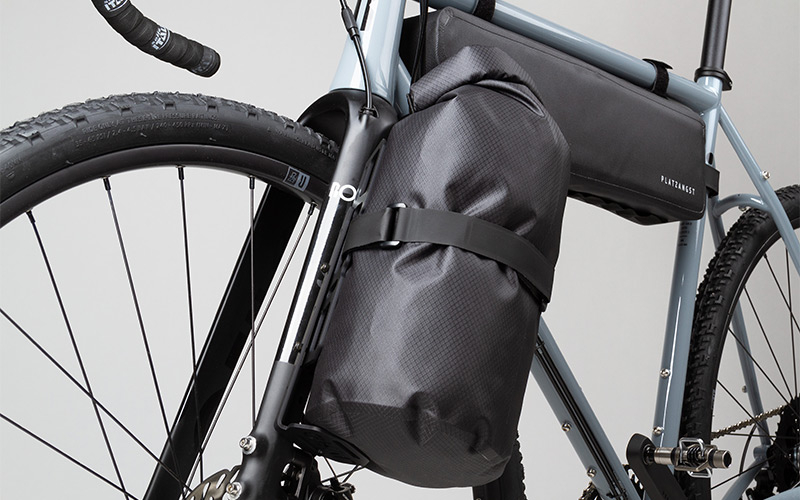
Bikepacking Bekleidung – was brauchst du wirklich?
Du kannst in deiner normalen Sport- oder Alltags-Bekleidung losfahren, wenn du Bikepacking nur testest oder sehr selten sehr kurze Runden machen willst. Je länger und je öfter du auf dein Bikepacking-Rad steigst, desto eher macht sich gute Fahrradbekleidung bezahlt! Hier eine Liste der Stücke, die du nach und nach kaufen solltest:
Fahrradbekleidung für Bikepacking
Helme | Fahrradhosen | Regenbekleidung | Trikots | Jacken und Westen
Welches Zubehör brauchst du für Bike Packing Touren?
Damit du möglichst wenig Gewicht mit dir herumschleppst, gilt für das Zubehör: Nur das Nötigste! Es gibt aber eine wichtige Grundausstattung, die du mitnehmen solltest und je weiter weg von Geschäften und der nächsten Fahrradwerkstatt du unterwegs bist, desto größer wird die Packliste.
Wichtiges Zubehör für Bikepacking Urlaub
Multitool | Ersatzteile | GPS | Fahrradlampen | Anbauteile | Schlösser
- Absolut wichtig: Ein Multitool und die wichtigsten Ersatzteile, mit denen du beispielsweise einen platten Reifen oder eine gerissene Kette flicken kannst. Eine gute Regel ist hier: Nimm nur das mit, was du auch bedienen kannst. Der schönste Nippelspanner hilft dir unterwegs wenig, wenn du nicht weißt, was du damit anfangen sollst!
- Du brauchst eine Campingausrüstung mit Zelt, Schlafsack, Isomatte und Kochgeschirr. Achte hier auf besonders leichte Produkte, die so gebaut sind, dass du sie in deine Fahrradtaschen packen kannst.
- Ein gutes Fahrrad-Navigationssystem ist eine echte Hilfe da draußen!
- Eine helle Fahrradbeleuchtung ist vorgeschrieben und wichtig für deine Sicherheit.
- Wenn du keinen hast – Gepäckträger kann man nachrüsten! Auch andere Anbauteile sind eine Überlegung wert, Schutzbleche sind beispielsweise eine großartige Erfindung! Du kannst Fender fest montieren oder Steck-Schutzbleche mitnehmen.
- Wenn du dein Fahrrad abstellst – also spätestens am Abend – solltest du es mit einem Schloss sichern.
5. Fahrradtrikots und spezielle Shirts sind auf dem Fahrrad besonders bequem, aber für Gelegenheitsfahrer kein Muss. Wenn du längere Touren fährst, ist es allerdings sehr angenehm, wenn dein Oberteil schnell trocknet – und das ist bei Funktionsshirts der Fall. Geruchshemmende Fasern sind bei schweißtreibender Action eine gute Idee, vor allem, wenn du nicht alleine unterwegs bist!
6. Westen und Windjacken sind für Bikepacker, die oft und lange unterwegs sind, wirklich praktisch.
7. Armlinge, Beinlinge, spezielle Fahrradsocken, Unterwäsche und Multifunktionstücher sind für sehr lange Bike Packing Touren empfehlenswert.
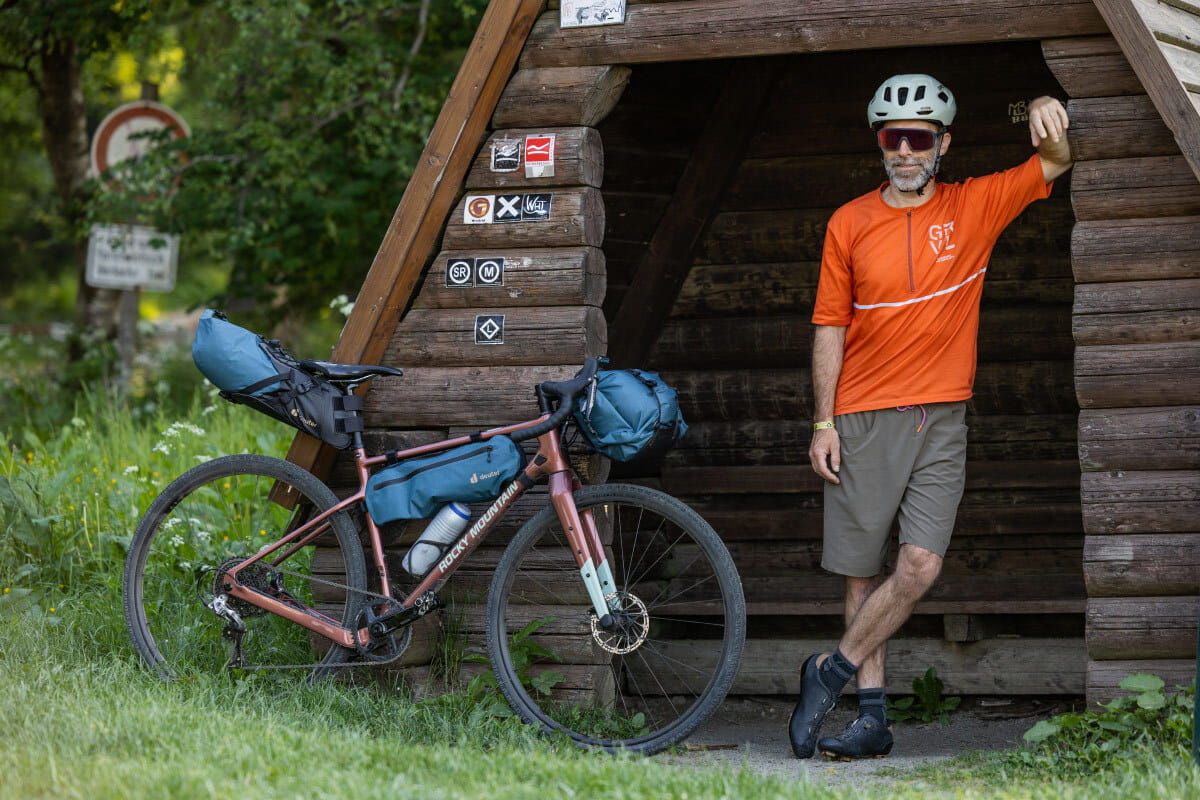
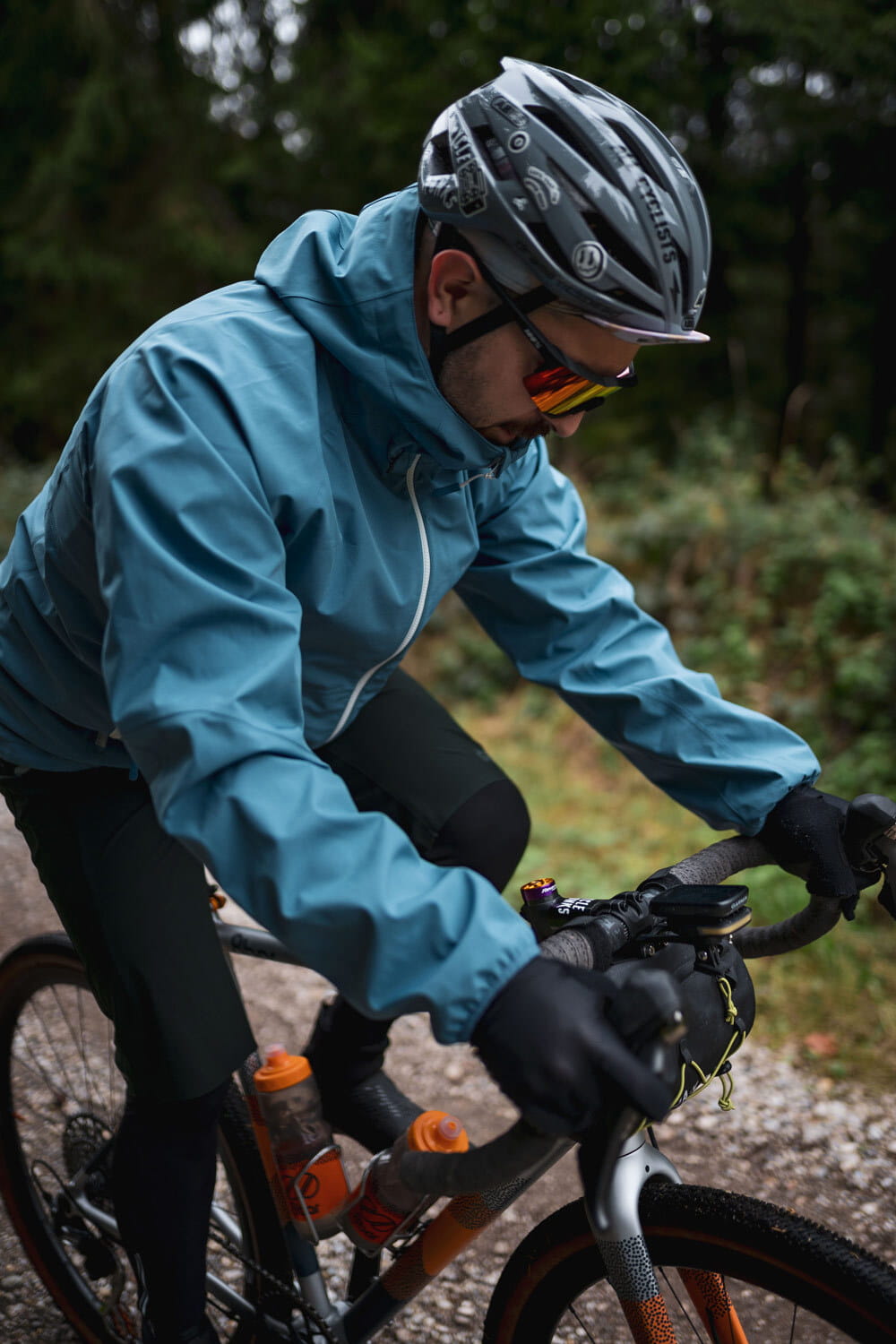
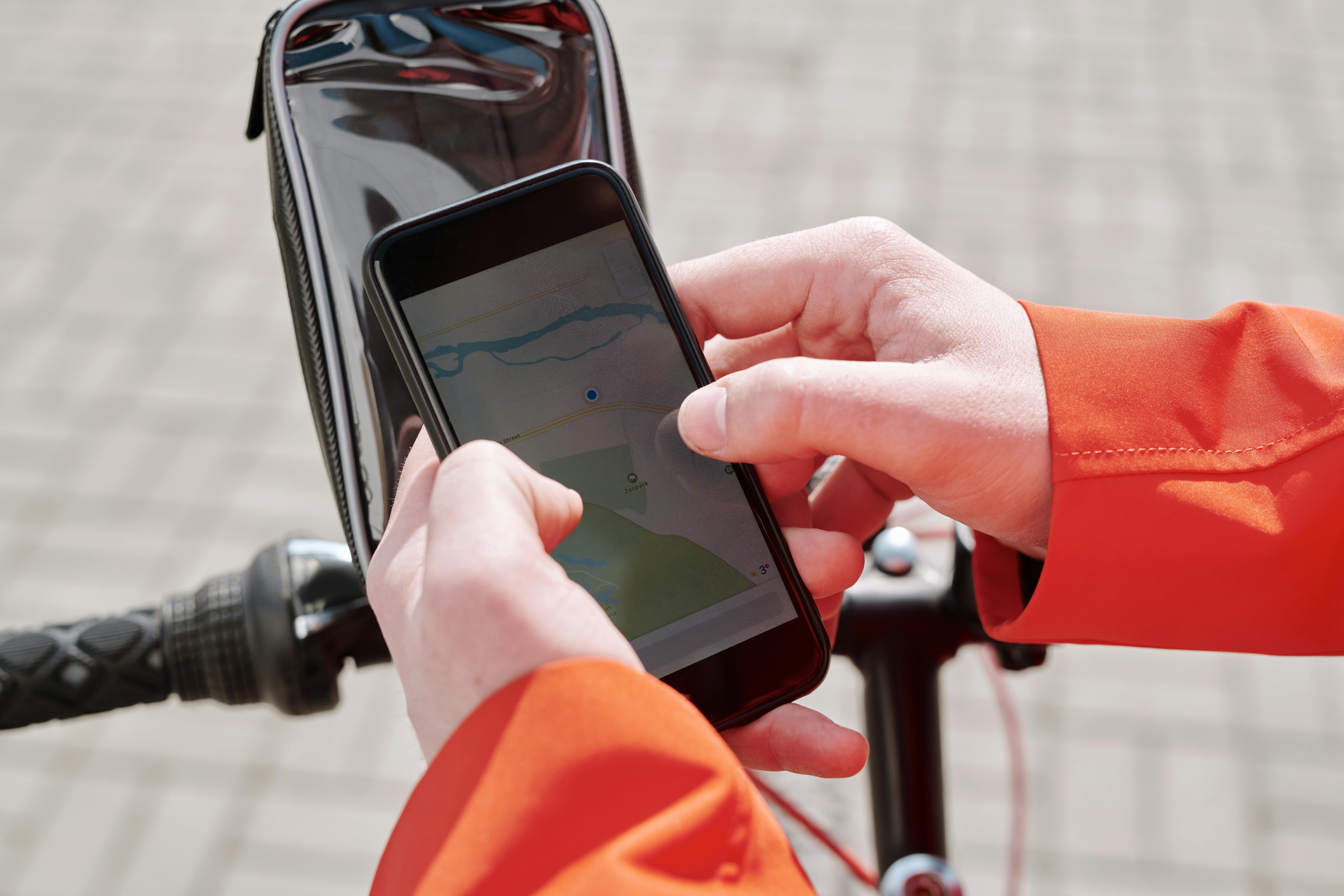
Deine persönliche Ausstattung ist natürlich auch wichtig – Hygieneartikel, Handy, Ladekabel, Getränke, Verpflegung und so weiter. Wenn du dir nicht sicher bist, was du genau brauchst, lohnt sich ein Besuch des Bike Blogs! Dort haben wir eine umfangreiche Bikepacking-Packliste für dich. Auch zu vielen anderen Themen rund ums Fahrrad und Bikepacking ist unser Blog eine Fundgrube, von Reparaturanleitungen bis zu Tipps für die Wartung vor der Tour ist jede Menge Lesenswertes dabei!
Nun kannst du starten, wir wünschen dir einige unvergessliche Tage da draußen! Kette rechts!
1. Du brauchst einen leichten Fahrradhelm, der dir gut passt, dann kannst du einfach vergessen, dass er da ist. Ein guter Helm sollte immer die erste Anschaffung sein!
2. Wer lange unterwegs ist, wird gute, gelgepolsterte Fahrradhandschuhe sehr schätzen.
3. Das nächste Kleidungsstück, das du dir zulegen solltest, ist eine Fahrradhose! Je länger du im Sattel sitzt, desto unangenehmer wird eine normale Hose. Ob du Shorts oder lange Hosen, enge Rennradhosen oder weiter geschnittene Hosen bevorzugt, ist dir überlassen.
4. Deine vierte Anschaffung sollte gute Fahrrad-Regenbekleidung sein. Eine Regenjacke und eine Regenhose sind die Basics. Wasserdichte Fahrradhandschuhe, Überschuhe und ein Helmüberzug hören sich nach unnötigem Kram an, können dir aber den Tag retten!
